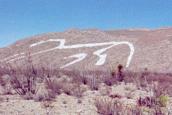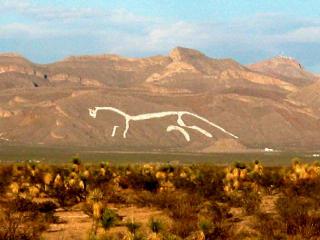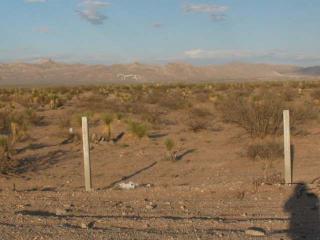England's Favorite Horse Arrives in Mexico A Juárez Architect Paints the Uffington White Horse on a Mexican Mountain
by Ben Brown
An oversized reproduction of one of England's most famous ancient artworks now gazes down from a mountain near the Mexican border city of Juárez.
The Uffington White Horse is a 110-meter (360-foot), highly stylized image of a horse created on a hill in Oxfordshire, England. The turf and sod was scraped away to expose, in the shape of a huge horse, the white chalk underneath.
By the time it reached Mexico, El Caballo de Uffington had grown to 960 meters (more than half a mile) in length. It was painted over three years and with 2,600 gallons of whitewash by Juárez architect Hector García Acosta and his son, Carlos.
The age and purpose of the British geoglyph have been debated for centuries. Locals argued that the image was not a horse at all, but a dragon a creature slain by St. George on another nearby hill. Others proposed the horse was carved by Saxons to commemorate a victory by King Alfred in the ninth century A.D. Yet another hypothesis put its creation at about 350 B.C., when it was carved by Iron Age Celts to represent the horse goddess Epona.
Research in 1996 by Oxford University archaeologists, however, moves the horse even further back in time, to between 1,400 and 600 B.C., during the Late Bronze Age. Its purpose, however, remains a mystery.
García Acosta said he undertook the reconstruction on the south side of the Juárez Mountains as a problem-solving exercise with his son and as a way to make passing urbanites pause long enough to take a look at the arid beauty of the mountains.
Many Thanks to Discovering Archaeology for allowing me to use this article of theirs.
Many Thanks to Mike Needham for allowing the use of his photo's - Copyright H M Needham 2002


